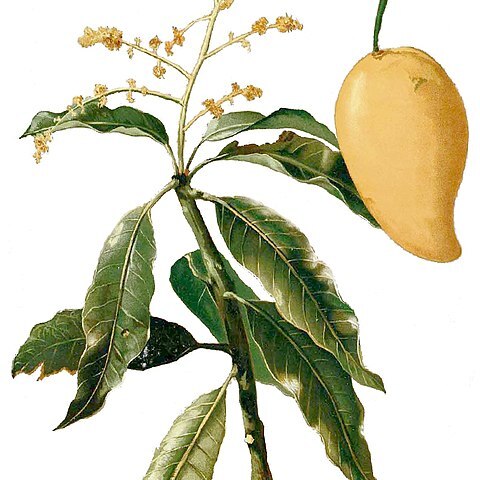Trees, 6-20 m tall; branchlets dark brown, glabrous. Petiole 3-7 cm, inflated basally; leaf blade lanceolate to oblong-lanceolate, 15-24 × 3-5.5 cm, papery or thinly leathery, glabrous on both sides, base cuneate, margin entire, apex acuminate, lateral veins 16-20 pairs, prominent on both sides. Inflorescence paniculate, terminal, 15-33 cm, glabrous, with slender primary branches; floral subtending bracts ovate-lanceolate, ca. 1 mm. Pedicels slender, 3-8 mm, glabrous, articulate. Sepals ovate to lanceolate, ca. 3.5 × 1.5 mm, concave, glabrous. Petals white with 3-5 dark brown veins adaxially, lanceolate to linear-lanceolate, ca. 7 × 1.5 mm, recurved and twisted apically at anthesis. Fertile stamen 1, ca. 4 mm; staminodes 1 or 2, shortly subulate to dentate; anther ovoid, ca. 0.7 mm. Ovary globose, ca. 1.5 mm in diam.; style subterminal. Drupe oblique, ovate, 6-8 × 4-5 cm, apex elongated into a curved beak; mesocarp thin; endocarp large, rounded to elliptic. Fl. Apr-May, fr. Jun-Aug.
More
A large tree. It grows 20-45 m tall. The leaves are stiff. They are 15-20 cm long and 3-6 cm wide. The flowers are yellow, pink or red. They do not have an odour. They are in groups at the ends of branches. The fruit are yellow. They are 8-16 cm long. There are both sweet and tart kinds. The fruit hang on the tree in winter.
A tropical plant. They grow in the humid tropics. It is native to the eastern Himalayas. It grows in forests along streams in southern China. In Sikkim it grows between 500-1,000 m above sea level. In Yunnan.
More
In dense, evergreen primary forests and also in more open secondary formations, growing on hillsides at elevations up to 1,000 metres.


